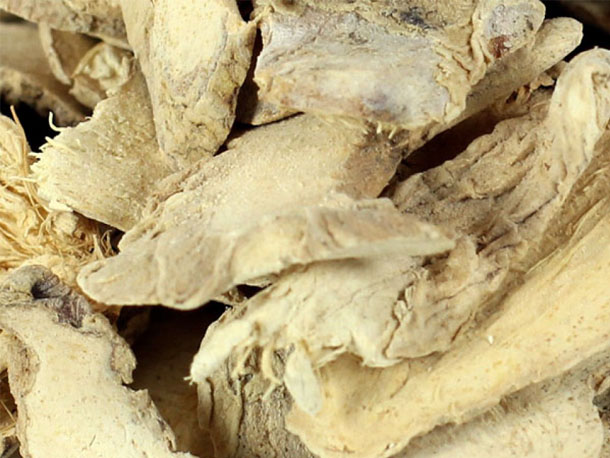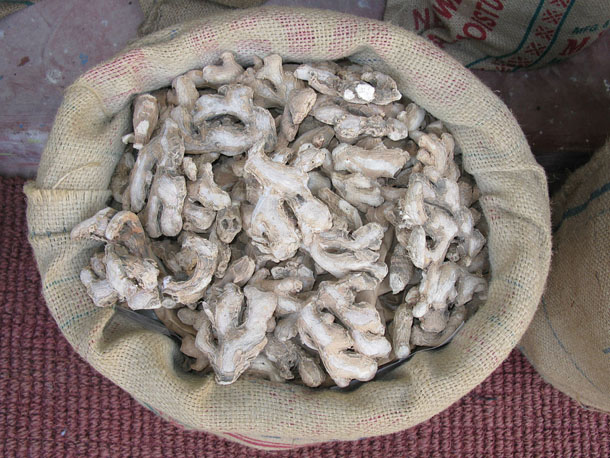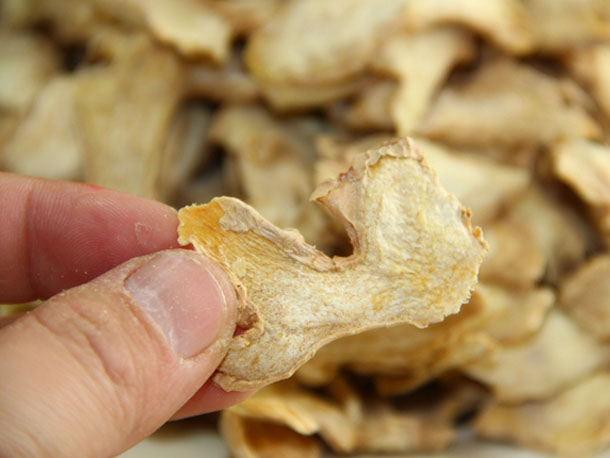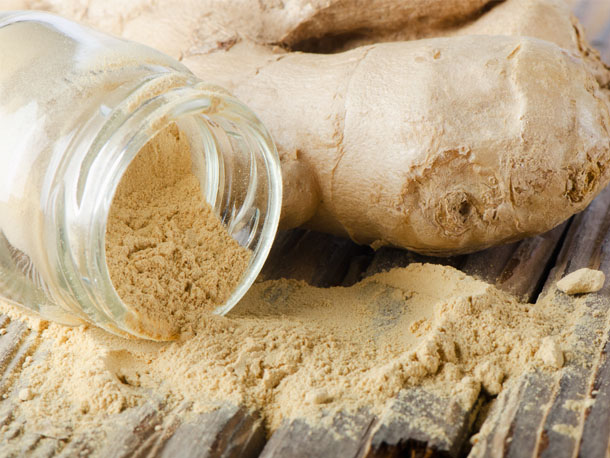Analysis: Stepping gingerly into the market
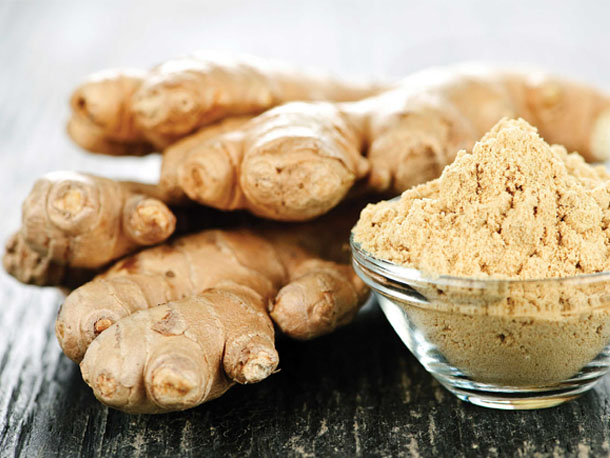
INTERNATIONAL dried ginger prices have weakened slightly in recent weeks and it looks as though further declines are possible as new crops start reaching the market. The next key crop to come through is that of Nigeria, with first arrivals of the country’s dried ginger expected from late this month.
European and US demand has been ticking along slowly as economic concerns continue to influence a cautious, hand to mouth buying approach. With nothing on the horizon to suggest this trend might change, additional downward pressure on prices looks inevitable, at least over the near term. However, further ahead, this could be offset by the possibility of extra demand from India, which is expecting a smaller crop in early 2013.
Nigeria is facing a slightly lower crop than last year after earlier heavy rains and floods. However, the crop will still be of a reasonable size.
The impact of rain on the country’s ginger crop is thought to be less severe than that seen in other crops. Much of the ginger is planted well away from rivers, meaning that there is less immediate risk of being swamped by flood water.
Robert Brandler of UK trader Tilbrook Products told that depending on quality, he was seeing Nigerian split dried ginger prices in a range of $2,200 to $2,500 a tonne ex-store Europe.
Gerwald Kras of the Rotterdam office of origin processor Olam International remarked: “The US are paying $2,500 a tonne c&f for Nigerian ginger because there is a demand for non bleached ginger and there is more focus from customers worldwide for non bleached ginger and that can only be supplied by Nigeria. Also, Nigerian ginger is high in oil and therefore it is a good quality for extraction. So at the moment the US is willing to pay a higher price than the European market, which has not woken up yet.”
Contrasting with mostly slack European offtake, India has been particularly active in Nigerian ginger of late on expectations of limited of Indian material next year as a small Indian crop is forecast. “The Indian extraction companies and importers are asking for Nigerian ginger because of the tight situation in India itself,” Mr Kras said.
Indians back in the market
Mr Brandler commented that on a recent business trip to Nigeria he had seen a higher-than-usual presence of Indian buyers which looked to be continuing now. “There is more buying activity in Nigerian ginger, as predicted, because of the Indian situation. Prices seem to be higher in India, so the Indians who stepped out of the market last year are back in,” he said.
Manish Bafna of Indian spices exporter Bafna Enterprises said that the country’s plantings to ginger were around 50% lower this year from those of 2011, so the new crop would definitely be less and would arrive late. Moreover, current availability on dried ginger was very tight. “We generally see some arrival of (dried) ginger at the end of October or early November, but this year, due to the high price of fresh ginger no conversion into dry ginger has taken place,” he said.
Mr Bafna added that Indian material was currently being offered at around $3,300 a tonne fob Cochin.
The peak of arrivals from India should come through in February and March but the bulk of consumption is invariably in January and February.
Mr Kras commented: “The crop is coming too late and therefore people are dependent on old stocks.”
Some Indian trade sources believe the country’s dried ginger prices could escalate by some 25 to 30% over the next few months due to the underlying tightness and strong internal demand.
It also has to be borne in mind that a large part of the domestic consumption is of whole fresh ginger, which puts a further limit on the quantities available on the dried side.
Another unknown in the equation is the extent of unsold stocks from India’s 2011 crop, which was a good one.
Ethiopia is seen as a potential small additional supply option for importers in India and the Middle East but for European importers the origin is largely ruled out as there remain major concerns over quality, particularly in terms of aflatoxin.
Output gains in China
Meanwhile, arrivals from China’s latest crop should soon reach the market. On December 4, Nilesh Dattani of Hong Kong exporter Orient Resources Company remarked: “Prices have fallen rapidly in recent days and may fall further due to an anticipated larger crop this season.”
European dealers said they had also already seen some easing in Chinese prices.
Mr Kras said he had seen offers on sliced Chinese dried ginger at $2,900 to $3,000 a tonne c&f.
However, he cautioned that it should not be assumed that there would be a downtrend in Chinese prices as the origin has never been dependent on the export market, invariably first making heavy sales of fresh ginger into its domestic market, leaving limited availability for dehydration. As a result, China’s exports of dried ginger are a small fraction of the total.
Mr Brandler said he was expecting overall dried ginger demand to pick up in the next month or two, which is when people normally started to look to cover their annual requirements. He recalled that a few months ago some of his customers had taken the view that prices were not going to move any lower so they had covered for the whole of 2013. Nevertheless, he acknowledged that there were others who preferred to limit their forward coverage.
Missing the boat
Mr Kras viewed cautious buying as the dominant trend at the moment. He warned: “With ginger you can easily miss the boat by holding back on purchasing. That is why the pattern on ginger was always with large companies to square off their needs for the full year and buy it. Last year, maybe with the help of India, we had an over supply, but the current pattern of buying hand to mouth can be disastrous in ginger because you can find it is not there for you and you run out of ginger.”
Mr Kras added that this meant there was a lot of upside risk in prices. Moreover, there were not many companies willing to sell far forward on ginger, he noted.
Blair Coutts of UK trader Blair Impex observed that the trade in whole dried ginger was constantly diminishing. “The way the trade is going now a lot of companies are bringing in their ginger already ground. They are putting the emphasis on the shipper or the supply country to conform to EU standards, rather than taking the risk of bringing in the ginger whole and then grinding it.”
Mr Coutts noted that it was much less costly for EU importers to let origin firms undertake the grinding and producing to specific sizes in line with EU norms.
Overall availability next year could hinge on how willing China is to export its dried ginger. If the country holds back on volumes then this could lead to a severe global tightness.
Mr Bafna suggested that in view of its own supply difficulties, India could end up being the most expensive origin, followed by China and then Nigeria.
It certainly looks feasible for India to hold place as the most costly origin for the foreseeable future. However, much will depend on how demand unfolds in early 2013 and later months.
Price levels from China and Nigeria will obviously also be influenced by demand factors. In addition, if keen to export, China might cut its prices to better compete against Nigeria.
Crucially, the ginger growing belt in Nigeria is the same one as that for sesame seed and farmers grow both crops side by side. Nigerian sesame seed prices have surged higher as the country has drawn extra demand after a poor crop in India.
As a result, Nigerian ginger farmers will have some power this season to hold back stocks to optimise their financial gains.
Hence, recent price dips in global prices could prove to be a short term development, and, even if European and US demand remains slow in 2013, the potential for an upturn in prices cannot be ruled out.

